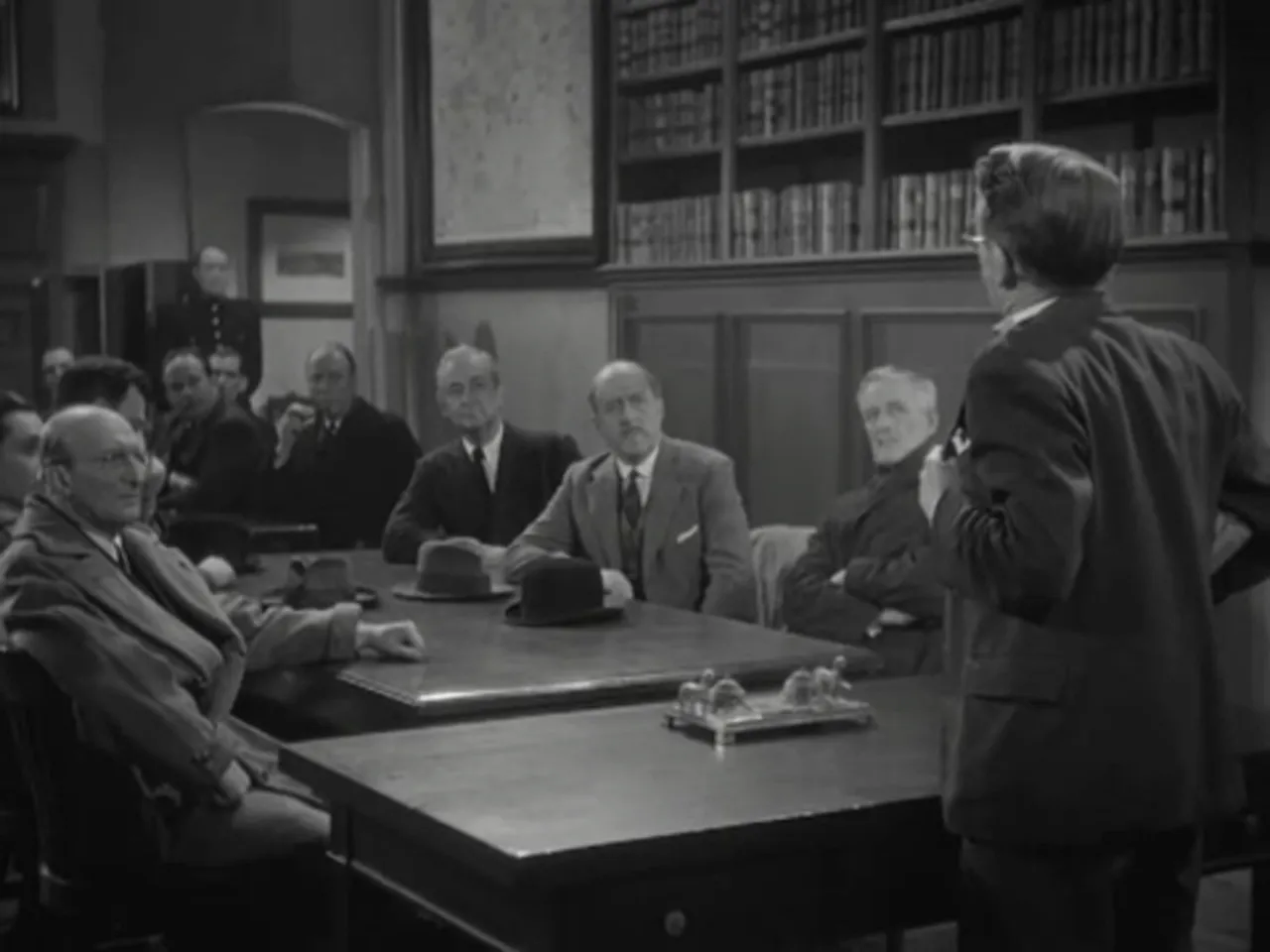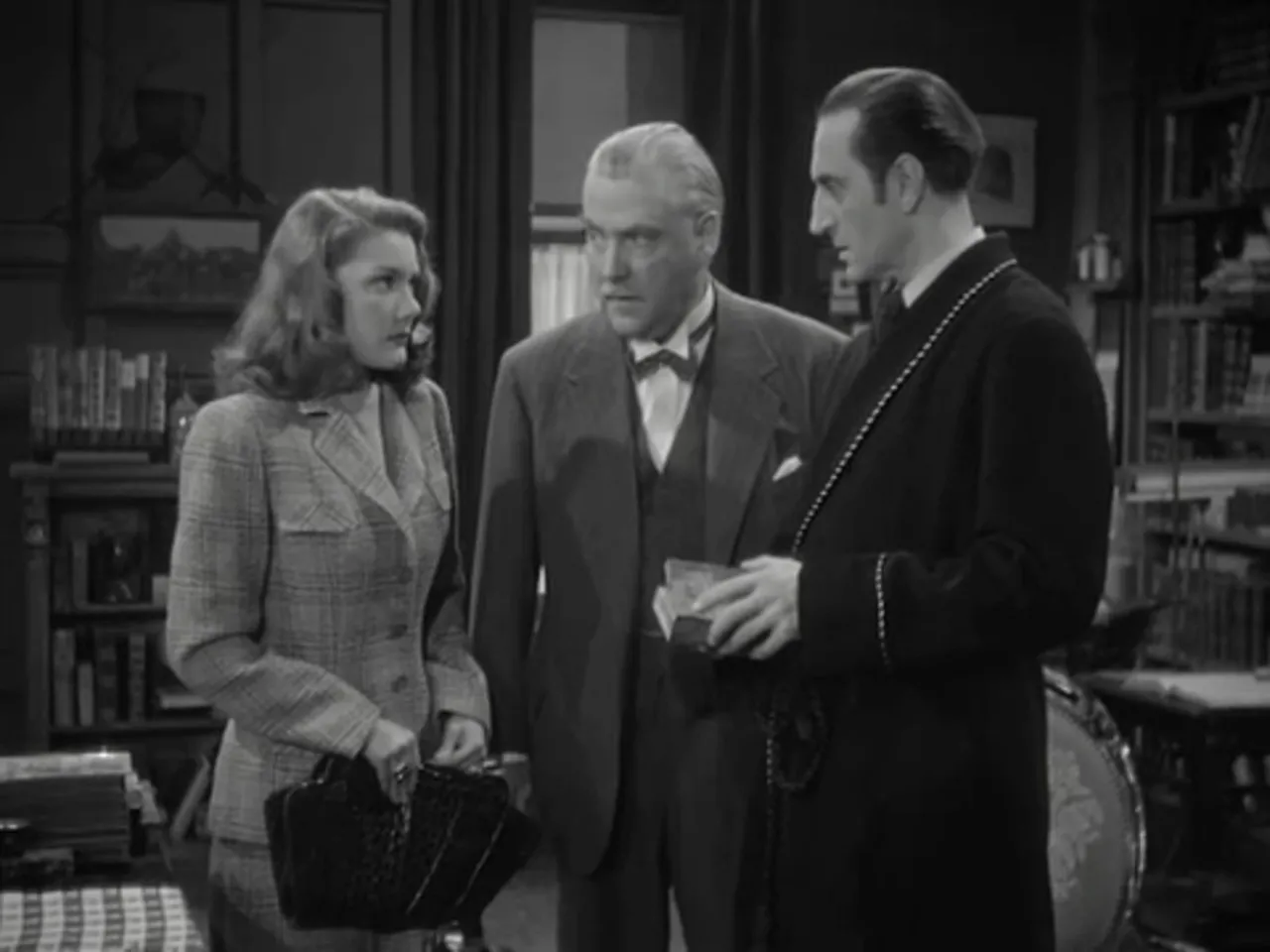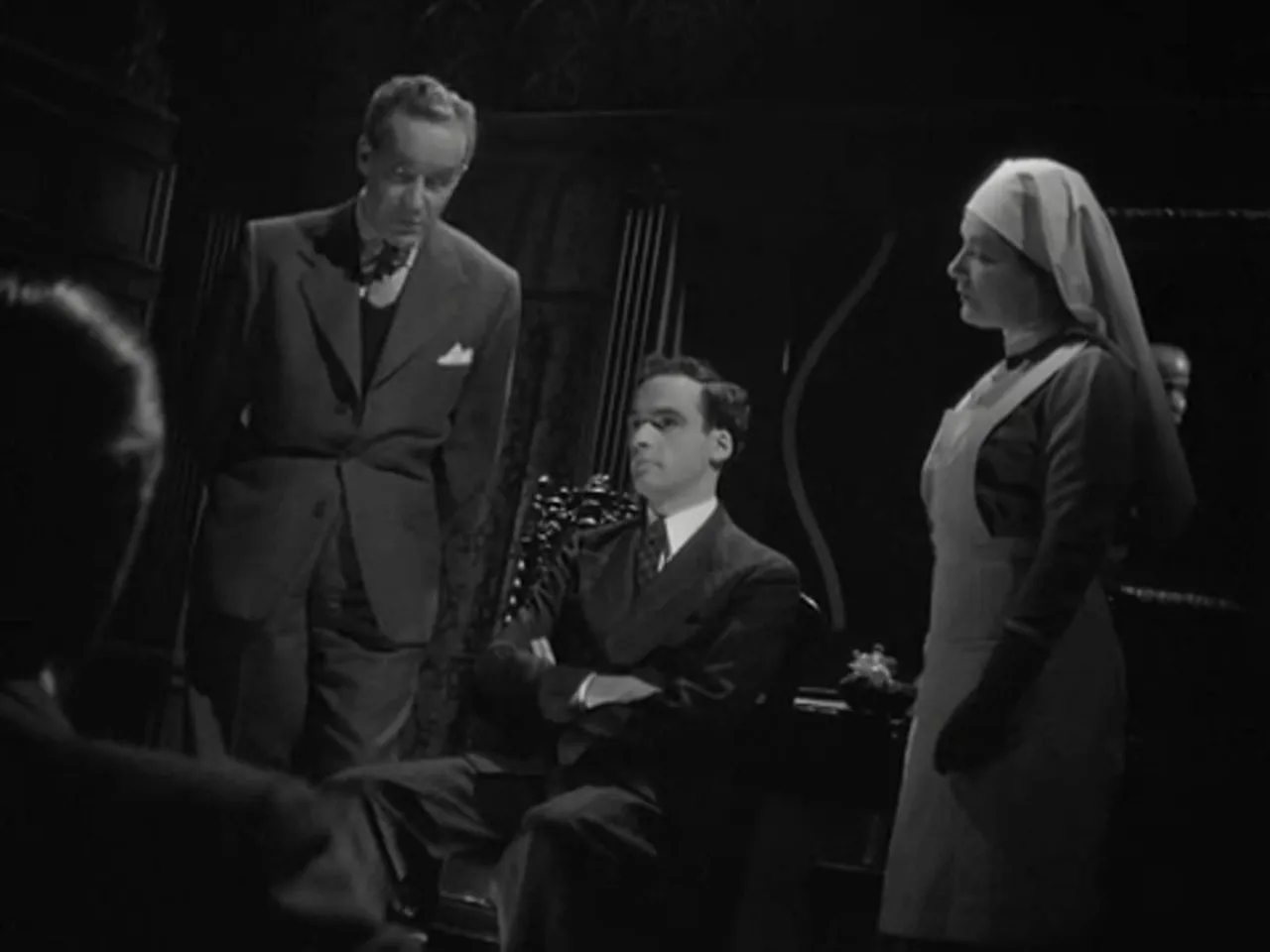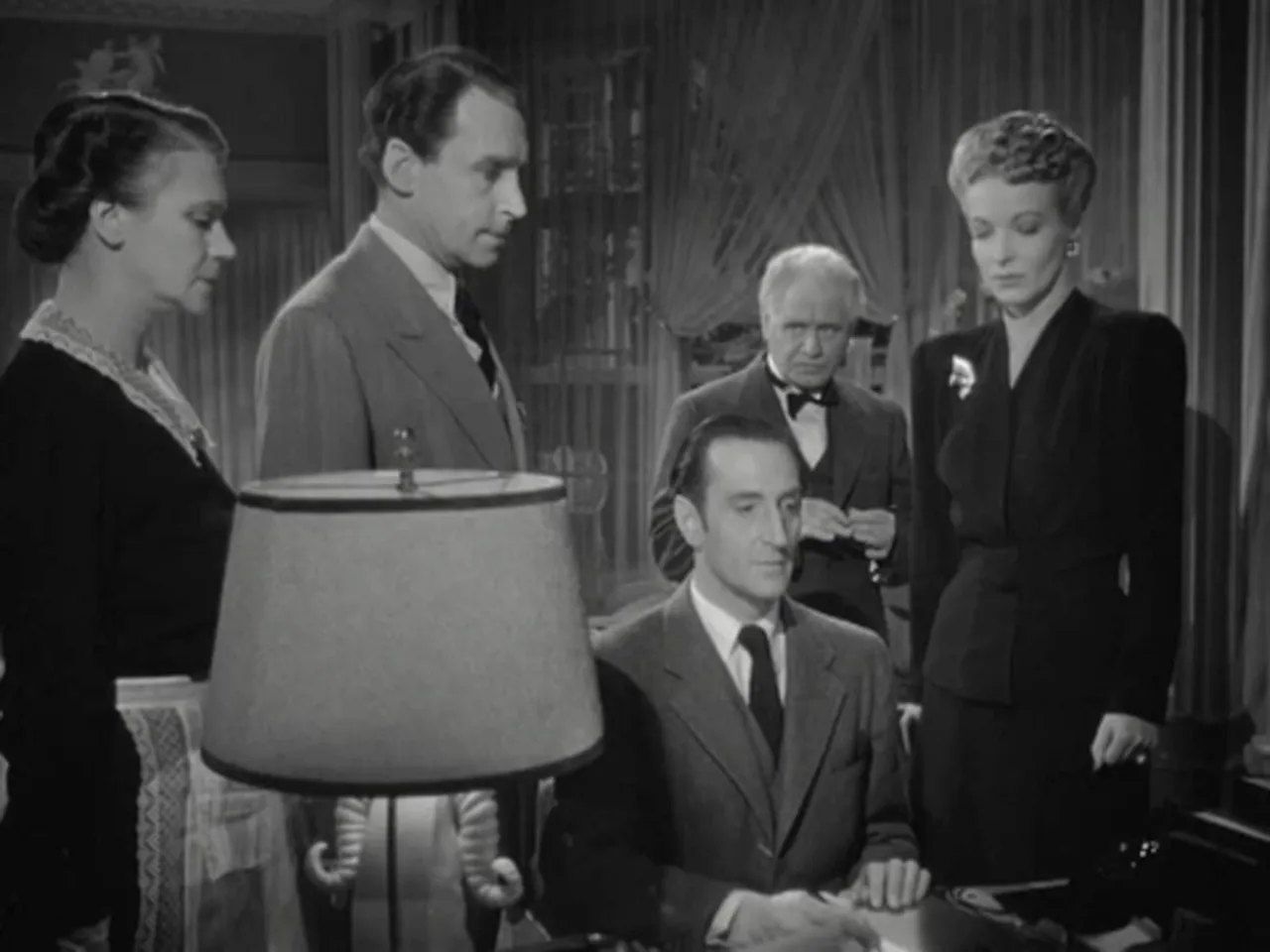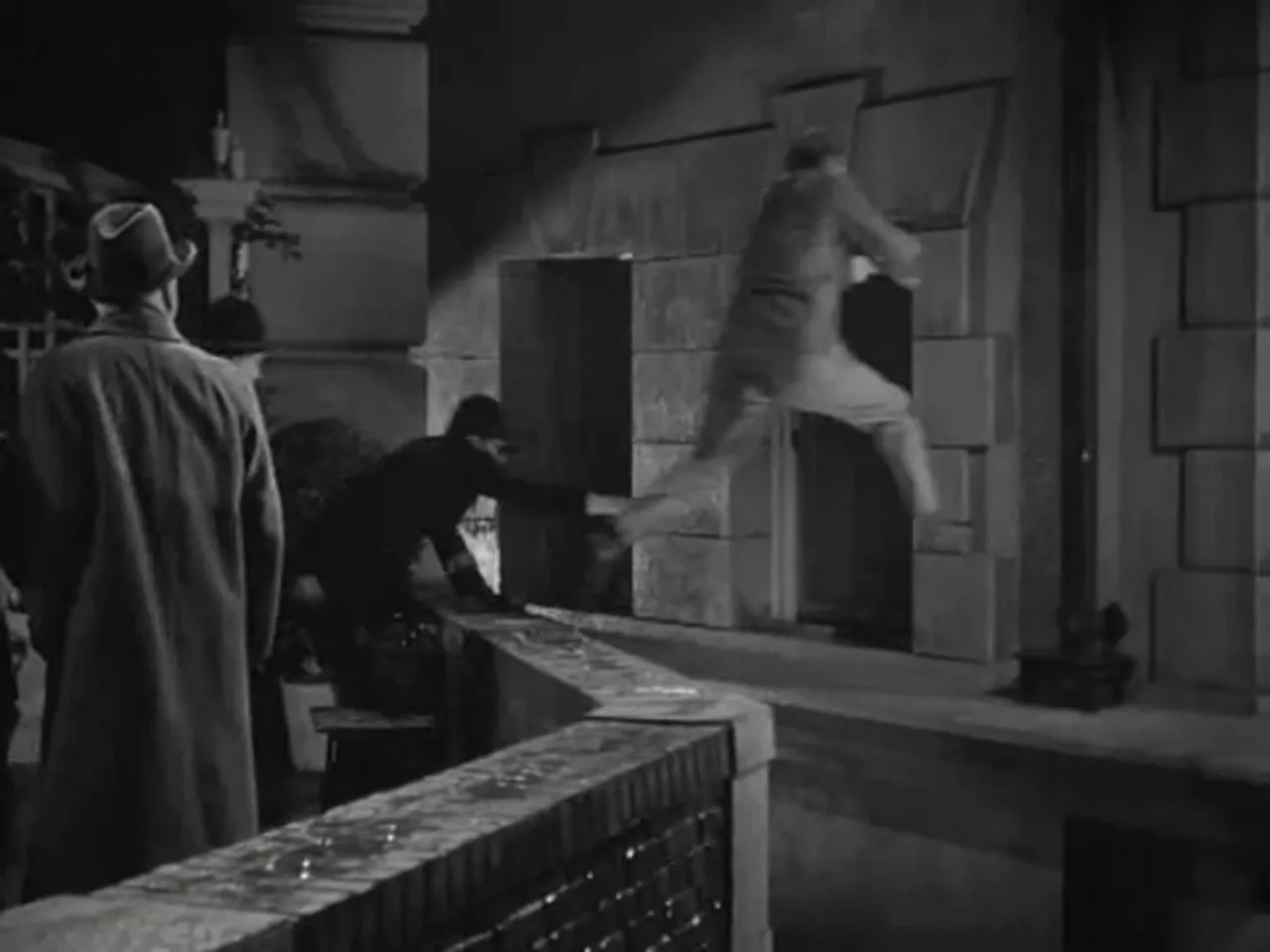As a perennial study in atmosphere, performance, and the mechanics of suspense, The Woman in Green stands as a compelling example of how a film noir movie aesthetic can be married to classic detective narrative. Released in 1945, directed and produced by Roy William Neill and starring Basil Rathbone as Sherlock Holmes and Nigel Bruce as Dr. Watson, this entry in the Rathbone–Bruce Sherlock Holmes series uses shadow, cunning, and psychological manipulation to craft an urban fable about guilt, control, and the vulnerabilities of reputation. The film noir movie qualities are present in its plotting, its moral ambiguity, and its visual shorthand, even as it remains rooted in a tradition of literary adaptation and studio-era mystery filmmaking.
Outline
- Introduction: The Woman in Green and the film noir movie sensibility
- Production context and key personnel
- Plot synopsis and narrative mechanics
- Major themes: hypnotism, blackmail, and moral panic
- Characters and performances: Rathbone, Bruce, Brooke, and Daniell
- Direction, cinematography, and noir visual cues
- Series placement, public domain status, and historical reception
- Critical analysis: Why it can be read as a film noir movie
- Legacy and relevance for contemporary viewers
- Conclusion: The film as a study in control and spectacle
Introduction: A Sherlock Holmes Tale with a Film Noir Movie Pulse
The Woman in Green occupies an unusual place in the long lineage of Sherlock Holmes on screen. On its surface it is a tightly-paced 68-minute mystery picture produced by Universal Pictures, the eleventh of the Basil Rathbone–Nigel Bruce series. But scratch the varnish and the film reveals a darker sensibility: an urban landscape populated by predatory forces, a femme fatale who uses modern psychotechnologies (hypnotism) to compromise men, and a central preoccupation with reputation, shame, and the texture of guilt. Those elements are precisely what critics of noir would later identify as core characteristics of a film noir movie.
At its heart, the film stages a series of murders in which women are killed and their right forefingers severed. That grotesque signature becomes the engine of a blackmail scheme: wealthy, single men are covertly hypnotized and then led to believe they have committed the crimes, only to be coerced into paying to preserve their names. Sherlock Holmes, as portrayed by Rathbone, reads this pattern not merely as a string of violent acts but as part of an organized, rational, and ruthless method. The killer is less a raving lunatic than a professional criminal intellect — in this film, Professor Moriarty — whose calculated cruelty feels very much in tune with a film noir movie's fascination with inner corruption and the breakdown of ethical order.
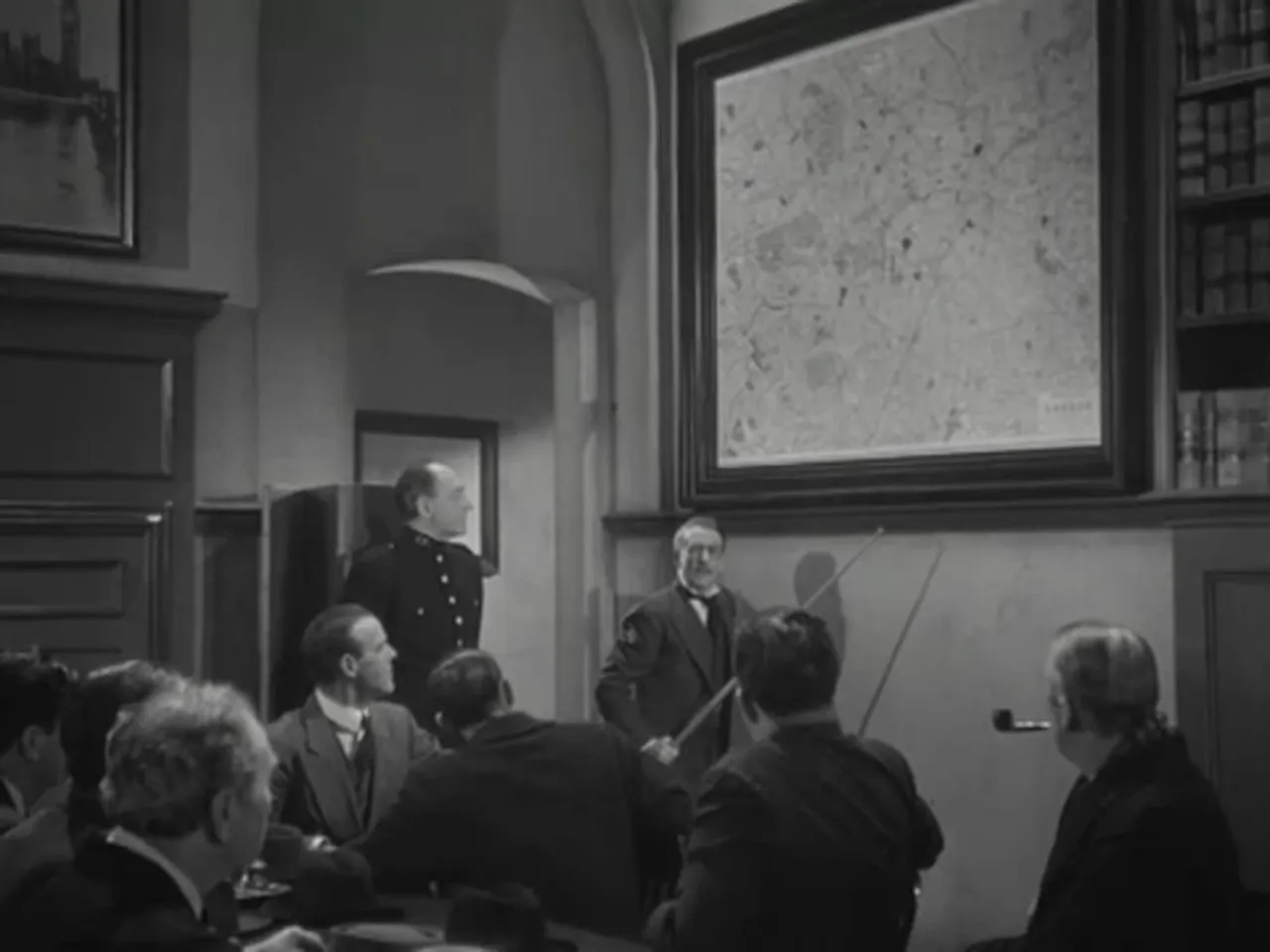
Production Context and Key Personnel
From the production credits documented on contemporary sources, The Woman in Green is a studio-era artifact shaped by familiar hands. Roy William Neill, both producer and director, steers the film with an economy typical of Universal Pictures’ mid-1940s mystery output. Bertram Millhauser wrote the screenplay, adapting elements from Arthur Conan Doyle’s stories, most notably material drawn from "The Final Problem" and "The Adventure of the Cardboard Box," but the film builds an original premise around hypnosis and calculated blackmail.
Basil Rathbone and Nigel Bruce headline the cast as Holmes and Watson, respectively, with Hillary Brooke as Lydia Marlowe — the woman of the title — and Henry Daniell as Professor Moriarty. The cinematography by Virgil Miller and the editing by Edward Curtiss create the film’s brisk pace and its shadowy visual textures. Mark Levant provided the music, which fits the period studio scoring conventions by accentuating suspense and emotional beats with concise orchestral cues.
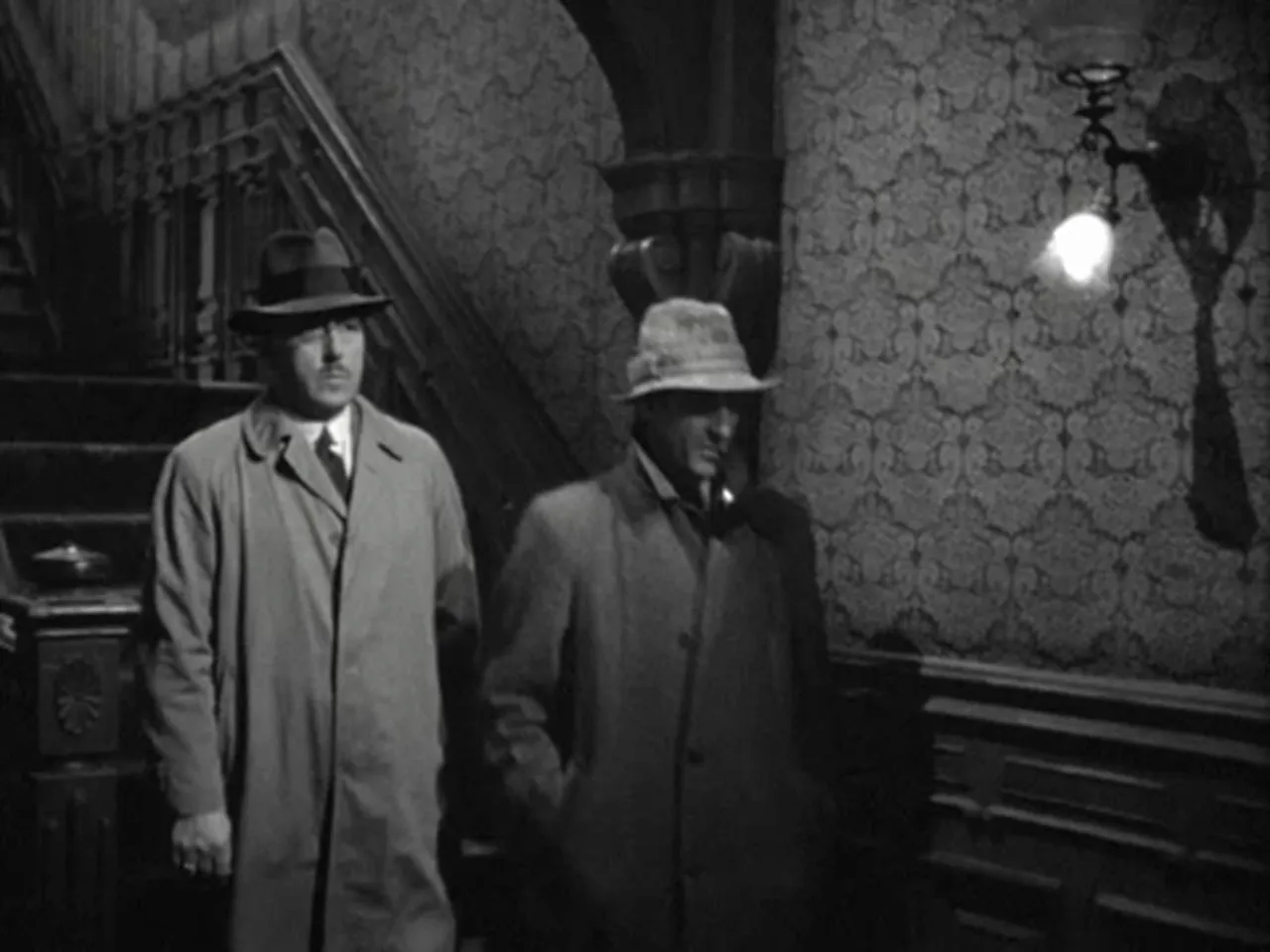
Where the film sits within the series
The Woman in Green is the eleventh of fourteen films featuring Rathbone and Bruce as Holmes and Watson in the Universal series. It follows a string of successful adaptations in which the film producers mixed canonical elements with newly-invented scenarios. Hillary Brooke’s role here marks her third appearance in the series in different capacities; Henry Daniell, likewise, is no stranger to Rathbone-era Holmes adventures. The series' rhythmic production schedule and audience familiarity with the leads allowed the filmmakers to experiment within the familiar detective framework.
Plot Synopsis: Method, Motive, and the Machinery of Fear
The narrative premise is deceptively simple: a serial killer leaves a macabre calling card — severed right forefingers — on the bodies of women murdered across London. The Inspectorate, represented by Inspector Gregson, delivers an opening conference that dramatizes the panic such a case produces. When Sir George Fenwick, a wealthy widower, wakes with a woman’s forefinger in his pocket and no memory of how it got there, the story pivots from a procedural hunt to a study of suggestion and coercion. Fenwick believes he might be the murderer; later he is found dead, an apparent victim of a cover-up to silence him.
Sherlock Holmes deduces, gradually and methodically, that the severed fingers are not the result of idiosyncratic psychopathology but instruments in a blackmail scheme. The method is surgical and staged: a woman is killed, a finger is taken, and a high-status man is hypnotically manipulated into thinking he performed the act. The blackmailers then exploit the man’s terror of being publicly exposed as a killer. Holmes further suspects that Professor Moriarty — presumed by many to be dead — is alive and orchestrating these crimes from the shadows.
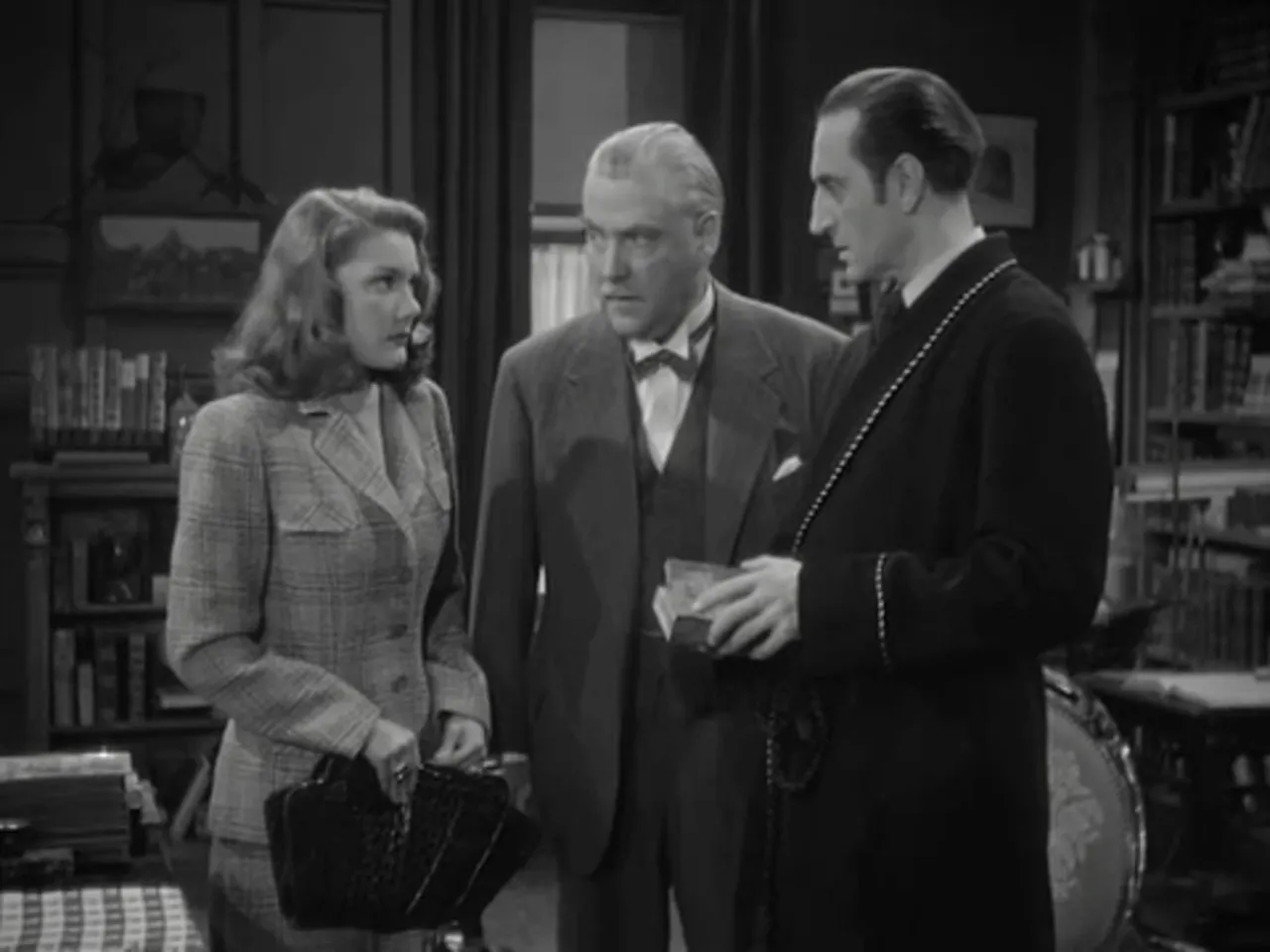
Key moments that define the plot
- Commissioner’s conference and the map of murders — sets the case’s civic stakes.
- Sir George Fenwick’s amnesia and discovery of the finger — transforms the case into personal ruin.
- Fenwick’s murder and the match folder clue pointing to Pembroke House — the trail to Moriarty.
- The Mesmer Club and the demonstration of hypnotic power — central to the film’s scheme.
- Moriarty’s confrontation with Holmes and the climactic attempt to force Holmes into apparent suicide — the final psychological gambit.
Major Themes: Hypnotism, Blackmail, and the Collapse of Reputation
The film’s thematic architecture pivots on manipulation and the fragility of personal honor. Hypnotism is the technological/psychological lever through which male autonomy is subverted; the film treats it as both a modern marvel and a potential instrument of moral destruction. The perpetrators select men of status because the fear of public disgrace and legal ruin makes them pliable. Once convinced of their own guilt, these men will pay virtually any price to avoid exposure. That very human susceptibility — to shame, to rumor, to the obliteration of a social name — is the film's darkest engine.
In a film noir movie, motifs of entrapment, fatalism, and seduction frequently converge. The Woman in Green adapts those motifs to a Holmes story: the femme fatale archetype appears in Lydia Marlowe, who uses charm, soft lights, and music to disarm victims; the city is a place where private sins can be manufactured; and the legal system is at once the film’s instrument of order and the necessary stage for the blackmailers’ threats. These dynamics are classic noir territory, transposed into detective fiction.
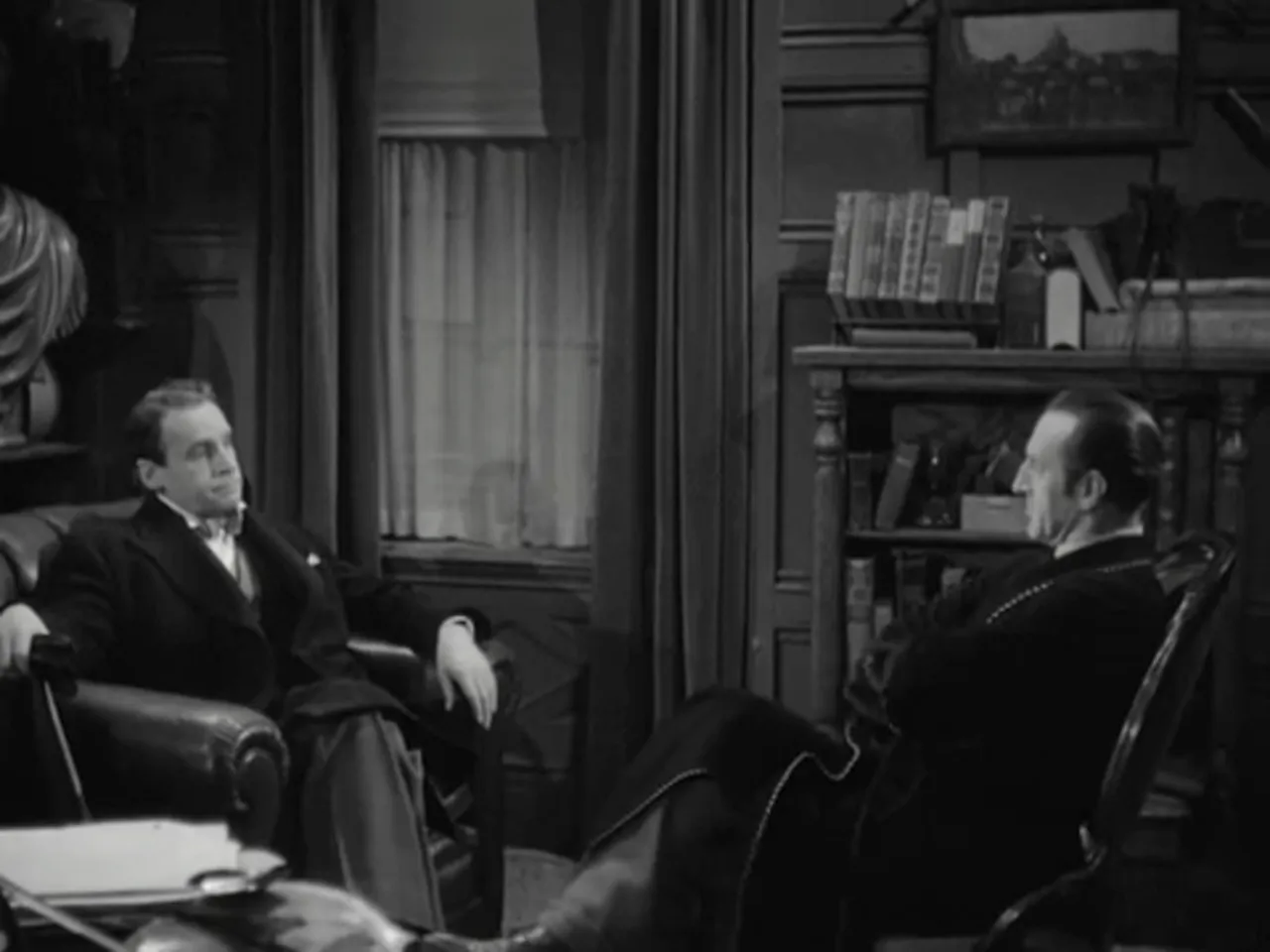
Hypnotism as metaphor
Hypnotism in The Woman in Green functions on two levels: as a plot mechanism and as thematic allegory. Practically, it explains the method of the crimes; thematically, it stands for ideological submission and the thinness of rational selfhood under pressured circumstances. The film suggests that modernity’s technological and psychological advances create new avenues for exploitation — an idea that resonates with noir’s skepticism of progress and institutions.
Characters and Performances
Acting in this film is both functional and expressive — the actors provide the driving intelligence of a taut script while embodying archetypal roles that allow the film to gesture toward larger motifs associated with a film noir movie.
Sherlock Holmes (Basil Rathbone)
Basil Rathbone’s Holmes is authoritative, composed, and psychologically precise. He reads both physical clues and human behavior with the same clinical acumen. Rathbone’s performance anchors the film’s ethical center; where many noir protagonists drift morally ambiguous or compromised, Rathbone remains the film’s rational lighthouse. That steadiness, however, does not diminish the film noir phrasing of dread — Holmes recognizes the system’s corruption and addresses it not with melodrama but with surgical dissection.
Dr. John Watson (Nigel Bruce)
Nigel Bruce’s Watson provides warmth, comic texture, and the ordinary human anchor against which Holmes’ brilliance is highlighted. Bruce’s performance, sometimes criticized in modern readings for a clumsy affability, functions here as a foil: his empathy and occasional disbelief are counterpoints to Holmes’ certainty. The Watson persona in this series is less the battle-hardened friend of Doyle’s tales and more an everyman companion who humanizes noir’s cold geometries.
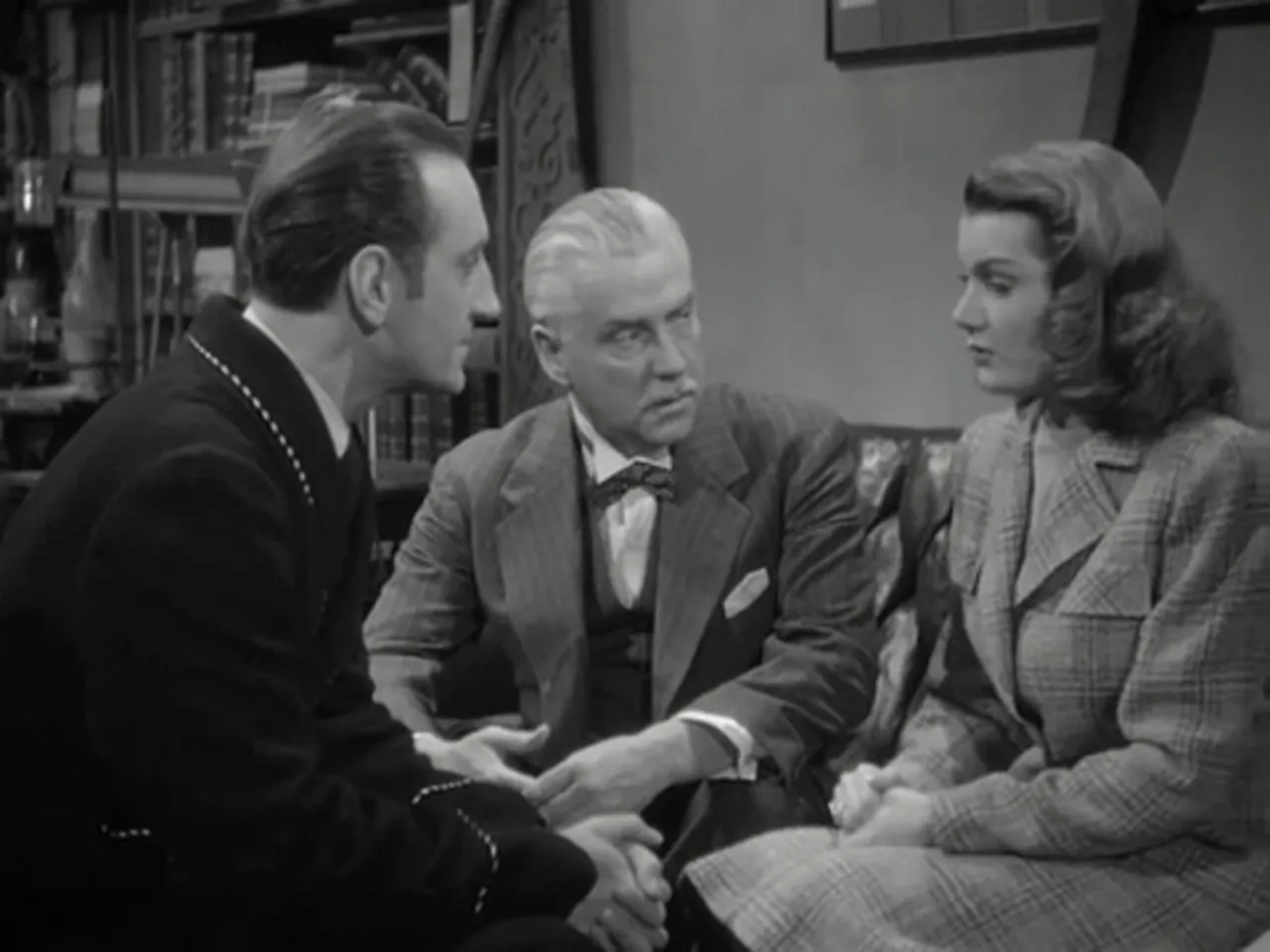
Lydia Marlowe (Hillary Brooke) — Femme Fatale?
Hillary Brooke’s Lydia Marlowe is the film’s most ambiguous figure. She is both charming and dangerous, a woman who can create an atmosphere of intoxicating intimacy: low lights, music, and a carefully controlled environment that enables hypnotic suggestion. As a quasi–femme fatale, Lydia embodies the film noir movie archetype — seductive, modern, and instrumental in men’s downfall. The film, however, complicates this archetype by having Lydia operate as an agent within a larger criminal intelligence rather than as an independent moral disruptor.
Professor Moriarty (Henry Daniell)
Henry Daniell’s Moriarty is the film’s rational villain: urbane, learned, and pitiless. The film situates him as the mastermind behind the finger murders and the broader scheme of manufactured guilt. In noir terms, Moriarty resembles the criminal kingpin whose cerebral detachment makes him even more dangerous than an impulsive murderer. Daniell’s performance, refined and elegantly cruel, supplies the film’s principal counterpoint to Holmes’ ordered investigation.
Sir George Fenwick and Supporting Players
Paul Cavanagh’s Sir George Fenwick becomes both a victim of the blackmail scheme and the story’s moral casualty. The supporting cast — including Matthew Boulton as Inspector Gregson, Mary Gordon as Mrs. Hudson, and Tom Bryson as Corporal Williams — fleshes out a world in which professional policemen and ordinary servants alike are drawn into the film noir movie’s net of suspicion and fear.
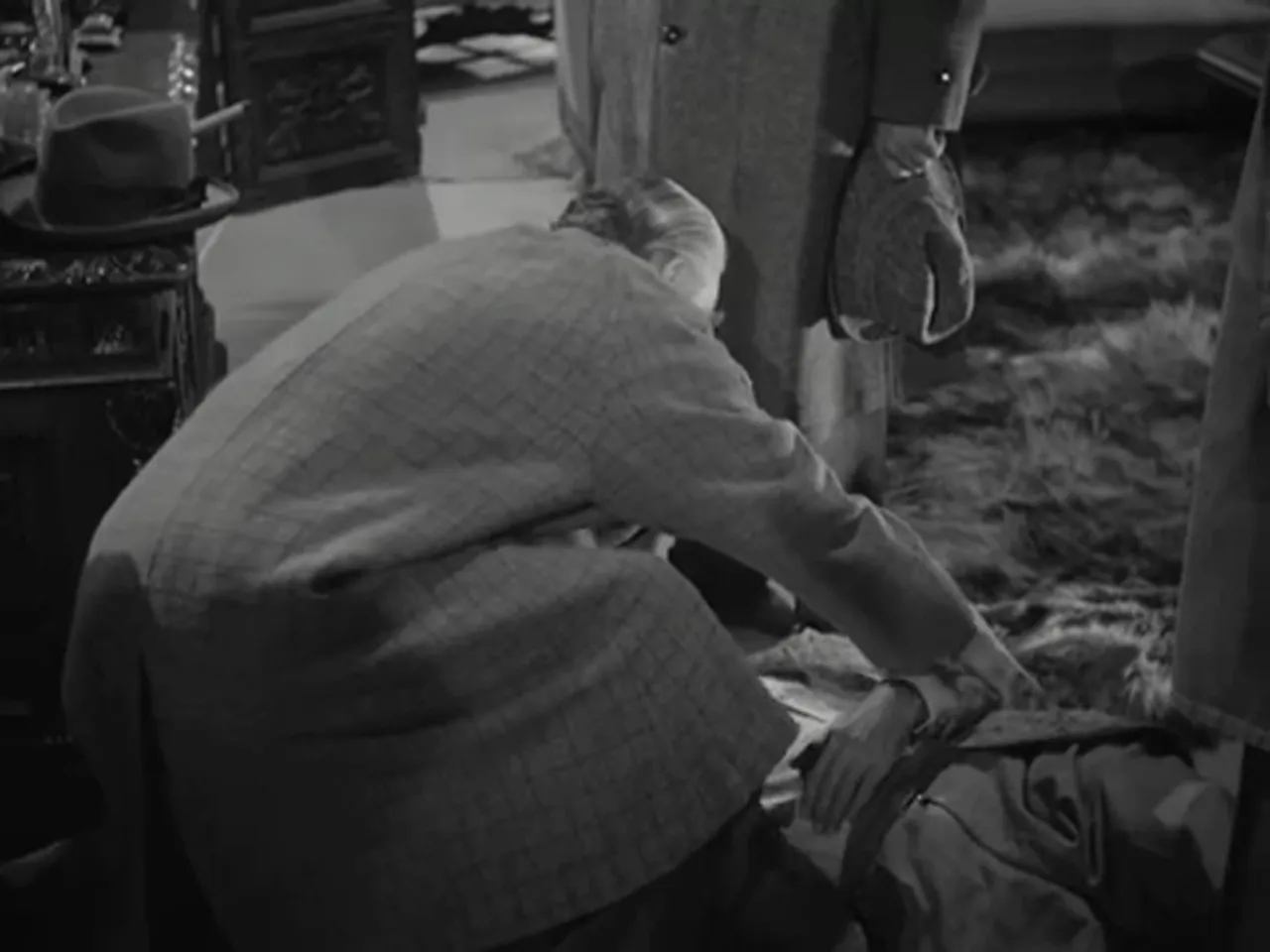
Direction, Cinematography, and Visual Style
Roy William Neill’s direction emphasizes economy and clarity. The film runs only 68 minutes, and that brevity forces a compact visual grammar: every scene propels the plot, every cut supports the logic of deduction. Yet within that efficiency, Virgil Miller’s cinematography punctuates the drama with noir-inflected choices — high-contrast lighting, pointed shadows, and compositional frames that confine and isolate characters.
Consider the recurring mise-en-scène of closed interiors versus open windows. Closed rooms denote intimacy and the trap; open windows imply exposure and the possibility of escape. The film uses the urban terrace, gallery, and narrow passageways to create a claustrophobic city where sightlines can be weaponized, where a sniper can act from a window across the street, and where shadow becomes both concealment and instrument.
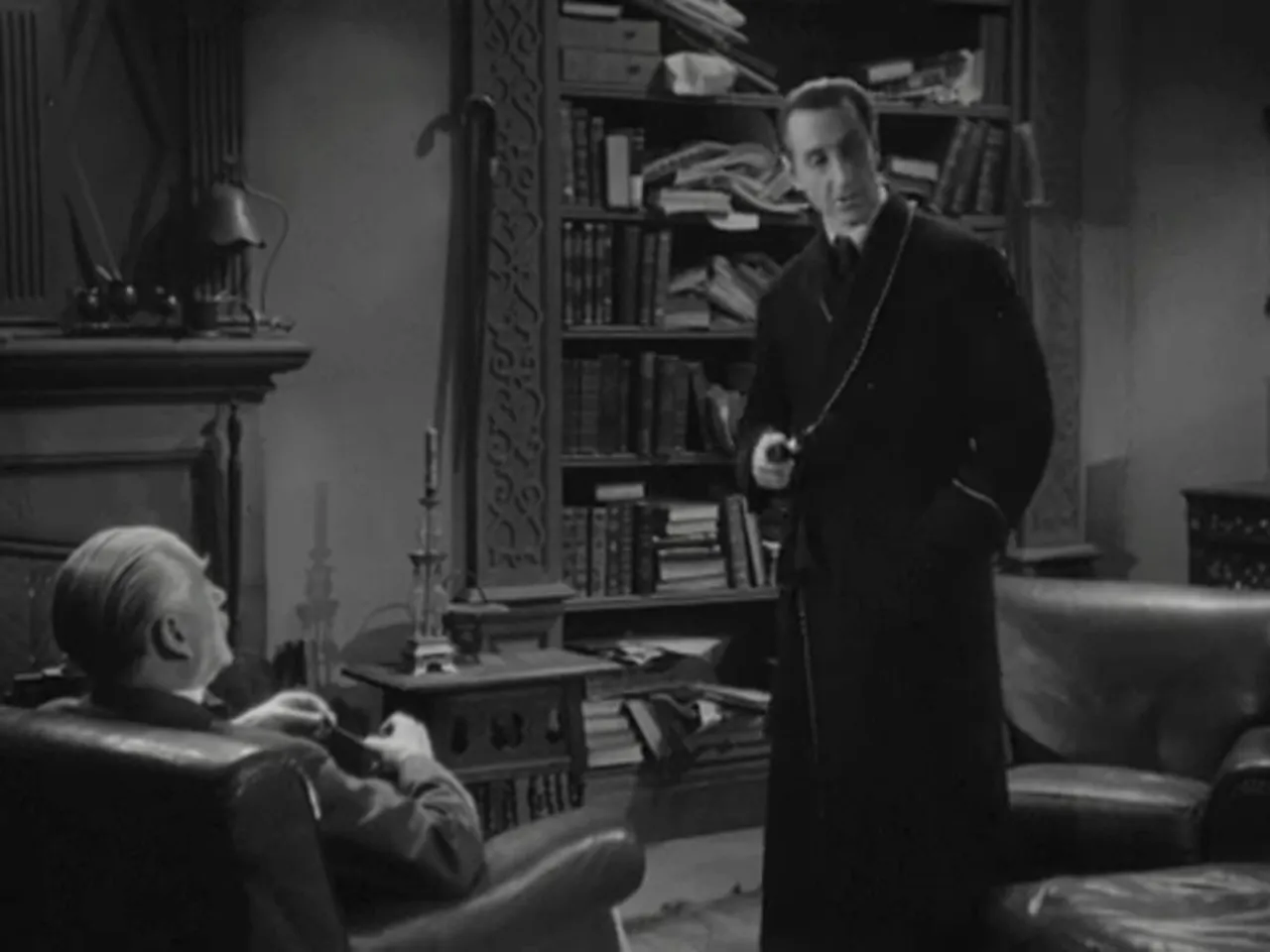
Stagecraft and the Mesmer Club
The Mesmer Club sequence functions as both narrative turning point and theatrical set-piece. The club’s pseudo-scientific demonstrations — a hypnotized subject pierced by a long needle without apparent pain — stage the film’s conflict between skepticism and belief. The sequence’s theatricality mirrors noir’s fascination with performance: the criminal elite perform respectability even as they execute monstrous acts. The film’s camera and editing capture this duality: the spectacle of the club belies its dark function as a marketplace for manipulation.
Where The Woman in Green Aligns with Film Noir Movie Tropes
Film noir, a term applied retrospectively to a body of studio-era American cinema, is characterized by several recurring motifs: urban setting, moral ambiguity, fatalism, a femme fatale, cynical or disillusioned heroes, and visual chiaroscuro. The Woman in Green—while not a canonical noir in the strictest sense—exhibits many of these characteristics and therefore invites a reading as a film noir movie hybrid.
- Urban milieu: The city of London in the film is a site of anonymous violence and hidden betrayals, a key noir condition.
- Femme fatale: Lydia Marlowe’s seductive manipulation mirrors classic femme fatale behavior.
- Moral ambiguity: The film forces questions about culpability, especially when men are made to doubt their own agency.
- Corporeal cruelty and symbolic mutilation: The severed fingers are grotesque tokens that function as both literal evidence and symbolic dismemberment of reputation.
- Cynical systems: The blackmailers use social institutions as instruments, exploiting judicial and social fears rather than confronting them directly.
These features are the bones of a film noir movie, and The Woman in Green dresses them in Sherlock Holmes’ deductive logic, producing a hybrid that is both homage and evolution — a detective narrative that doesn’t shy away from the darker textures later identified as noir.
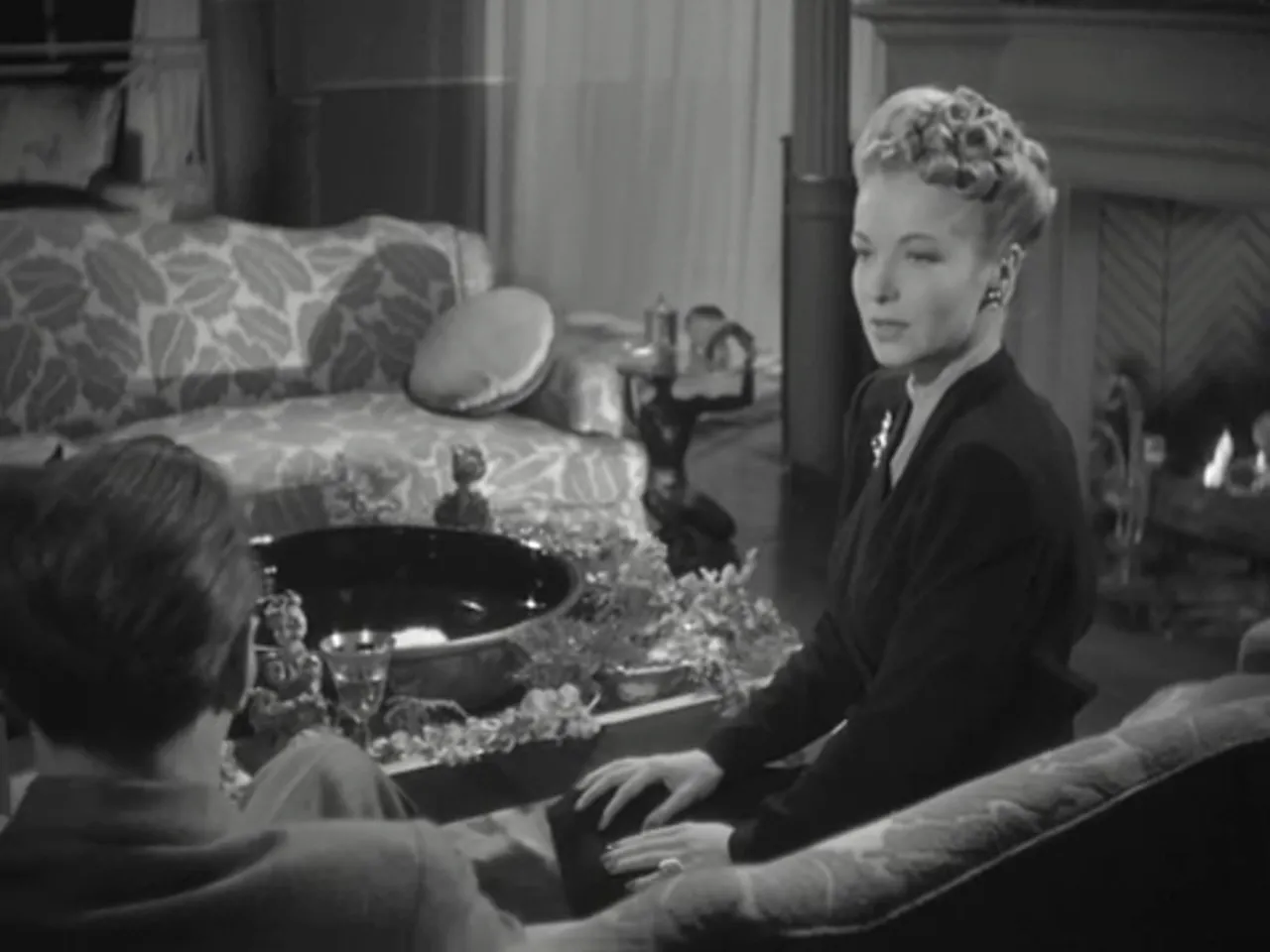
Hypnotism on Screen: Science, Spectacle, and Moral Panic
The film’s depiction of hypnotism is worth examining. In the Mesmer Club, practitioners present hypnotism as a therapeutic tool but also as a stage trick. The film deliberately blurs those lines, presenting charlatanry alongside legitimate practice. Holmes and Watson’s exchange about hypnotism — with Watson skeptical and Holmes more analytically open — constructs the viewer’s interpretive frame: hypnotism works in the world of the film, but its power is contingent on social and psychological vulnerabilities.
From a noir perspective, hypnotism represents modernity’s double-edged sword. It promises relief and mastery but also opens new routes for domination. In The Woman in Green, hypnotism is the mechanism by which private fame, money, and honor are turned into instruments of servitude. That instrumentalization is a central noir concern: technologies and social innovations are not neutral; they can become modes of exploitation in the hands of the morally compromised.
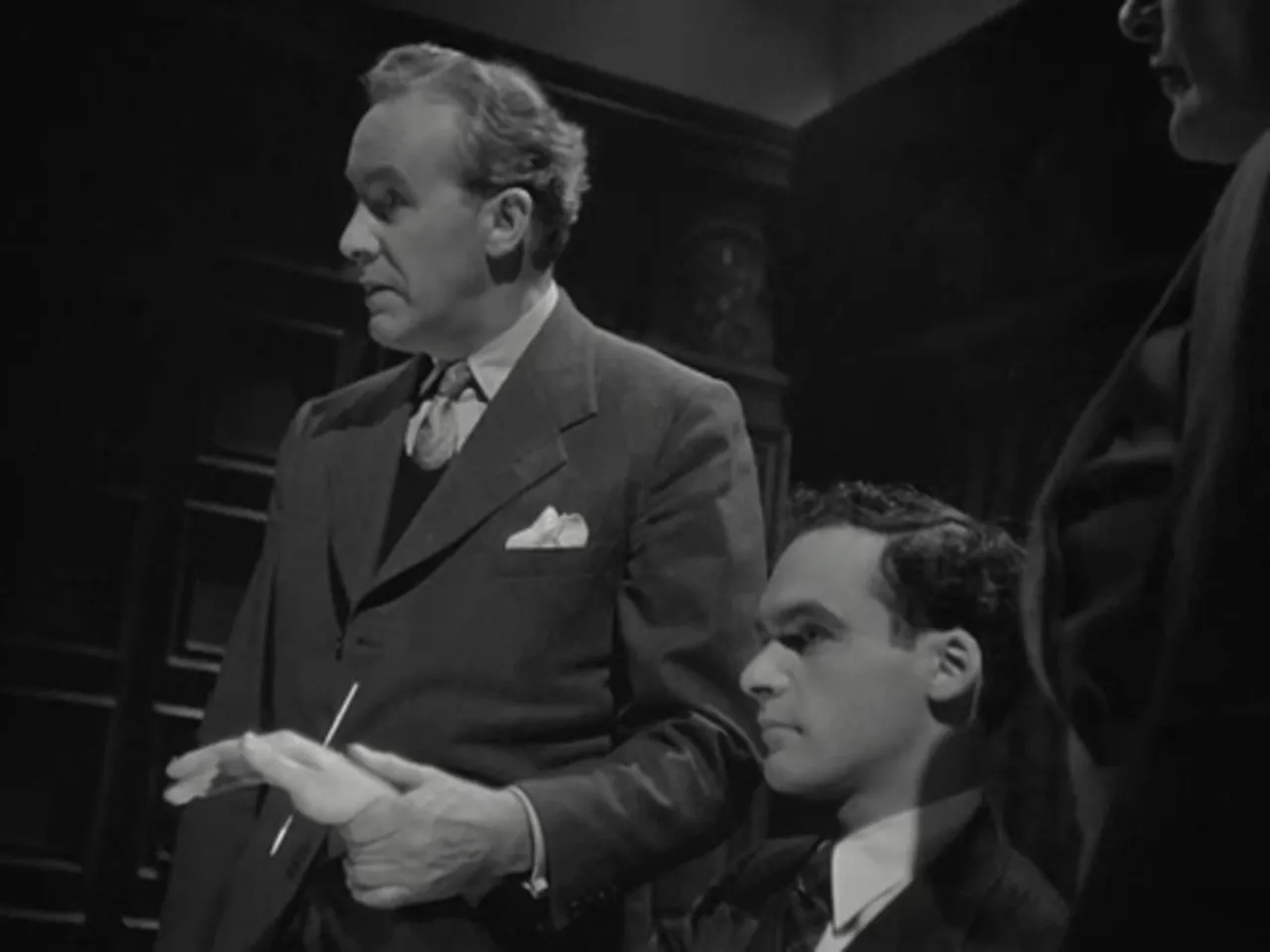
Performance versus genuinely induced trance
The film stages a debate between charlatanism and genuine trance. Several sequences invite the audience to question whether hypnotism is mere showmanship. The Mesmer Club’s needle demonstration and later the staged insensibility test conducted on Holmes read like forensic experiments — tests intended to prove or disprove. The film’s resolution, where Holmes fakes insensibility by ingesting a drug that leaves him conscious but impervious to pain, complicates the epistemological certainty: the audience is asked to discern lie from truth, mask from reality — precisely the kind of moral perplexity that defines a film noir movie.
Series Placement, Public Domain Status, and Historical Reception
The Woman in Green is positioned late in the Rathbone–Bruce Universal run. Its efficient storytelling and the franchise’s established formula allowed the filmmakers to concentrate on intrigue rather than origin tales. The film is also one of four in the series that are now in the public domain — a status that has affected its availability, reception, and critical afterlife. Because the film circulates widely in public archives and online repositories, contemporary viewers can access it easily, inviting renewed appraisal of its thematic density and stylistic choices.
Contemporaneous and subsequent critical reception often treated these Sherlock Holmes pictures as dependable entertainments rather than high art. However, modern critics and film historians have noted how the films sometimes intersect with more serious aesthetic currents, including noir. The Woman in Green, in particular, merits attention because it explicitly plays with psychological manipulation and urban corruption in ways that align with noir motifs.
Critical Analysis: Strengths, Limitations, and Interpretive Possibilities
Viewed strictly as a genre artifact, The Woman in Green demonstrates several strengths. It offers crisp plotting, strong performances, and a willingness to engage with contemporary anxieties about modern technologies and the fragility of reputation. Rathbone’s Holmes remains a figure of rational mastery, but the film resists simple reassurance: its world is structured so that social institutions can be used as weapons.
Some limitations emerge when the film is compared to canonical noir films. The Woman in Green preserves a moral center in Holmes that noir protagonists often lack. Where noir heroes succumb or are compromised, Holmes triumphs. Yet that moral centering does not eliminate noir inflections; rather it produces an interesting tension. The film is a detective picture that borrows noir’s vocabulary — but it still ends on the reassertion of order. That hybrid nature makes it a valuable case study for critics who want to consider how noir sensibilities infiltrated mainstream studio genres without fully supplanting them.
Pace and economy as virtues
The film’s 68-minute running time forces a tautness that most noir films achieve through compressed narratives and elliptical exposition. The Woman in Green uses this economy advantageously: there is no superfluous scene. Each beat advances the conspiracy, and each reveal recontextualizes a prior event. The result is a propulsive mystery that also allows space for atmospheric detours — the Mesmer Club, the terrace confrontation, the forensic moments at Fenwick’s home.
Performances: subtlety versus archetype
Rathbone and Daniell are clear highlights. Rathbone’s Holmes is methodical and urbane; Daniell’s Moriarty is serpentine and cultured. Hillary Brooke’s Lydia is a less nuanced but effective embodiment of the femme fatale; she is effective precisely because she is believable within the film’s logic — seductive without exaggerated artifice. Nigel Bruce’s Watson, while often caricatured in popular memory, is here serviceable: the film uses him to humanize professional detective activity, offering comic and moral ballast.
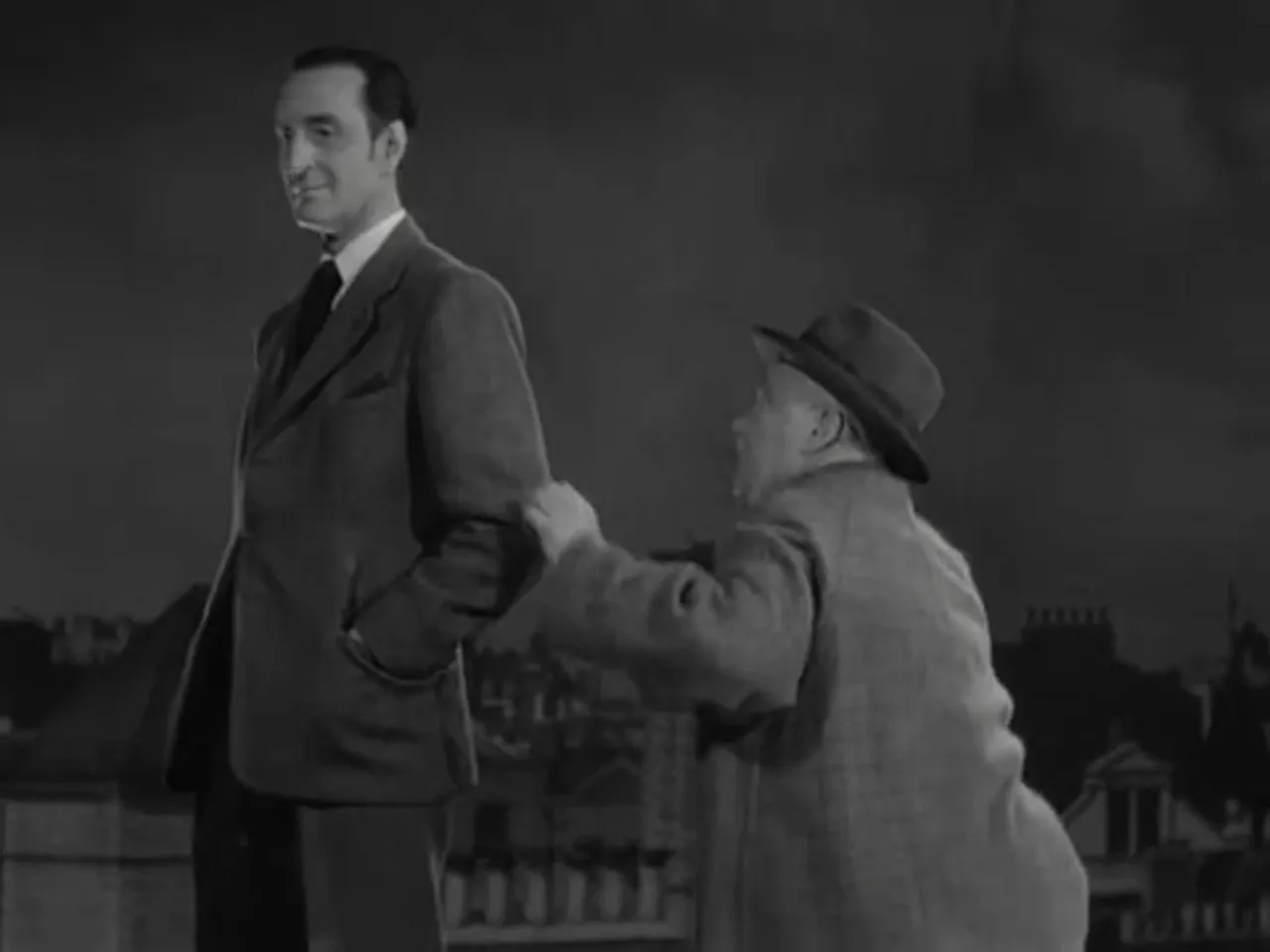
Legacy and Relevance: Why The Woman in Green Still Matters
The Woman in Green remains relevant for multiple reasons. First, it is an articulate example of how studio-era genre films could incorporate contemporary fears — here, the fear of psychological manipulation and social blackmail — into suspense narratives. Second, it exemplifies how Sherlock Holmes, a figure often associated with Victorian rationalism, could be updated to confront 20th-century anxieties. Third, it offers a compact, well-acted demonstration of how noir motifs could be grafted onto detective storytelling without losing narrative coherence.
For viewers and critics interested in the genealogy of film noir movie aesthetics, The Woman in Green is illuminating. It shows how noir’s themes infiltrated other genres and how those genres then repurposed noir elements for their own aims. Scholars of adaptation and genre will find the film useful because it translates Doyle’s material into a modern modality — the criminal mastermind using modern means — while preserving recognizably Holmesian logics of evidence and deduction.
Key Quotes and Moments
"Each of these red flags scattered through the city stands for a woman brutally murdered, a woman's terror, a woman's death agony." — The Commissioner
"The severed finger is what links the blackmail victim to the murder... For all he knows, he may have committed the atrocious crime during some dreadful lapse of sanity." — Sherlock Holmes
Both quotes articulate the film’s moral stakes: the public image that can be ruined and the private psychology that can be weaponized. The language evokes a film noir movie cadence — blunt, fatalistic, and preoccupied with shame.
Recommended Viewing Moments
- Commissioner’s map conference (early sequence) — sets the film’s civic stakes and noir tone.

- Fenwick’s discovery and the garden excavation — a macabre discovery that reorients the plot.

- Mesmer Club demonstration — a theatrical, ethically ambiguous moment.

- The hypnosis sequence and staged suicide attempt — the film’s central dramaturgy of control.

- Moriarty’s final flight and fall — noir’s lethal consequence of hubris.

Conclusion: The Woman in Green as a Film Noir Movie Hybrid
The Woman in Green is a film that rewards both genre fans and serious critics. It is a detective picture that borrows freely from film noir movie sensibilities: moral uncertainty, a femme fatale, urban dread, and a preoccupation with the ways modern techniques can be turned against society. Yet it remains fundamentally a Sherlock Holmes story — an exercise in methodical detection and the restoration of order. That dual identity is the film’s central interest.
Viewed today, The Woman in Green offers a concentrated glimpse into how postwar studio cinema could synthesize older literary properties with contemporary anxieties. It leverages hypnotism as a metaphor for manipulation and explores how reputation, social standing, and the fear of scandal can be weaponized by those with the resources and imagination to do so. The film’s noir inflections make it especially interesting for anyone studying film history, genre evolution, or the cultural logic of mid-20th-century crime narratives.
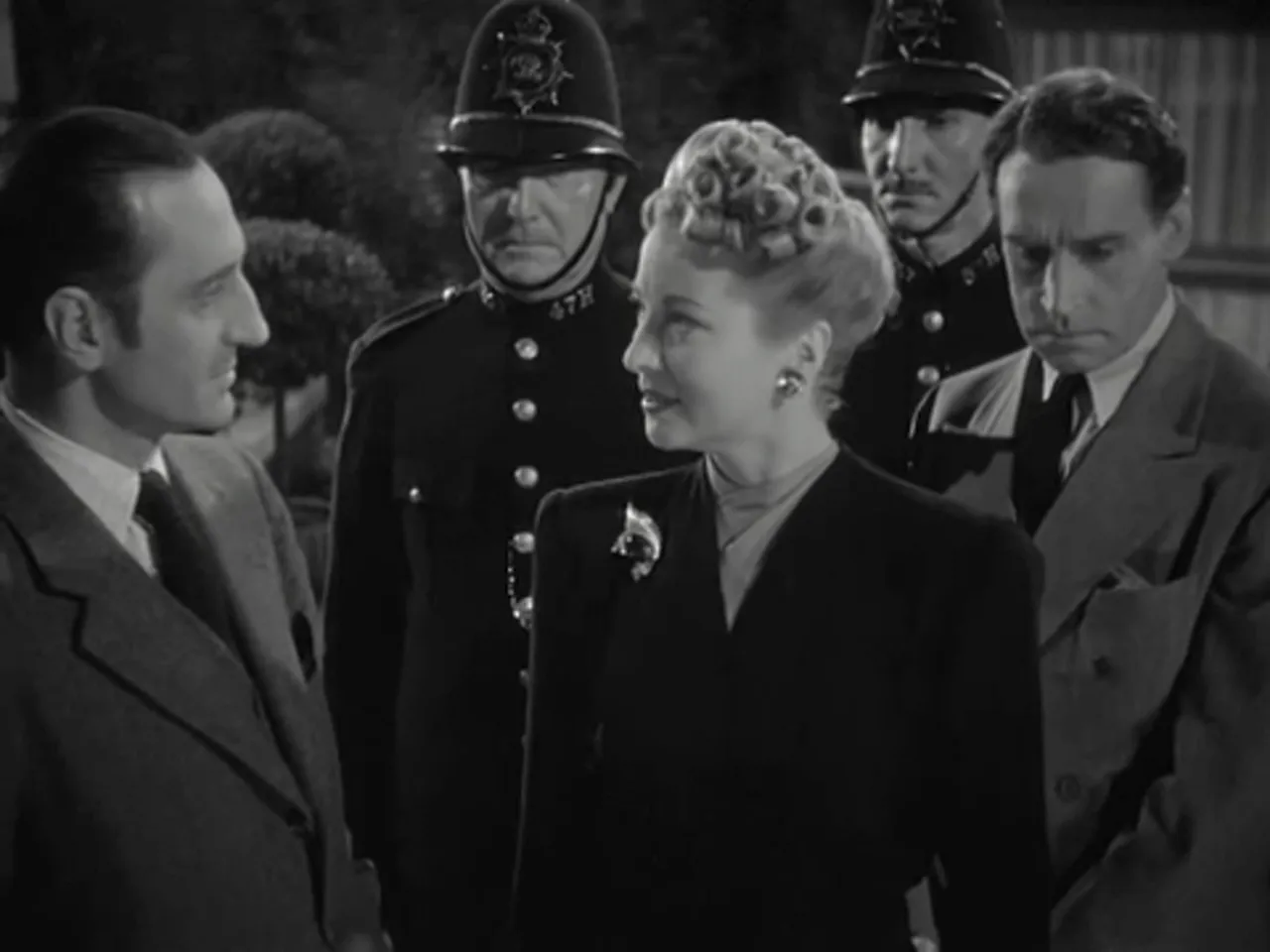
In sum, The Woman in Green succeeds at what it sets out to do: it creates a tight, atmospheric world in which an elite criminal intellect exploits modern fears to extract power from the vulnerable. The film showcases how a film noir movie sensibility can intensify a detective story without overwhelming its central premise. For aficionados of classic cinema and Sherlock Holmes adaptations, it remains a richly rewarding specimen — compact, clever, and darkly resonant.
Selected Cast and Credits
- Basil Rathbone as Sherlock Holmes
- Nigel Bruce as Dr. John Watson
- Hillary Brooke as Lydia Marlowe
- Henry Daniell as Professor Moriarty
- Paul Cavanagh as Sir George Fenwick
- Matthew Boulton as Inspector Gregson
- Tom Bryson as Corporal Williams
- Mary Gordon as Mrs. Hudson
- Directed and produced by Roy William Neill
- Screenplay by Bertram Millhauser
- Cinematography by Virgil Miller; Edited by Edward Curtiss; Music by Mark Levant
For viewers curious about the intersections of classical detective fiction and noir aesthetics, The Woman in Green is essential viewing. It stands as a film noir movie adjacent text — a detective story that listens carefully to the urban whispers of doom and disguises its critique in the language of deduction. The result is a film that still holds a dark mirror to the anxieties of modern life, and in doing so, continues to provoke, entertain, and unsettle.

